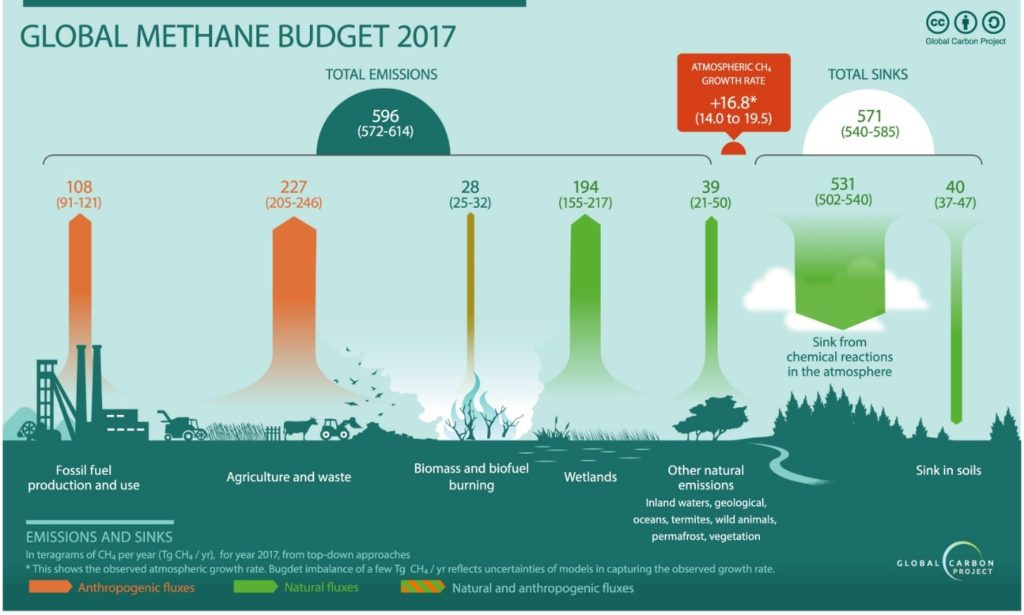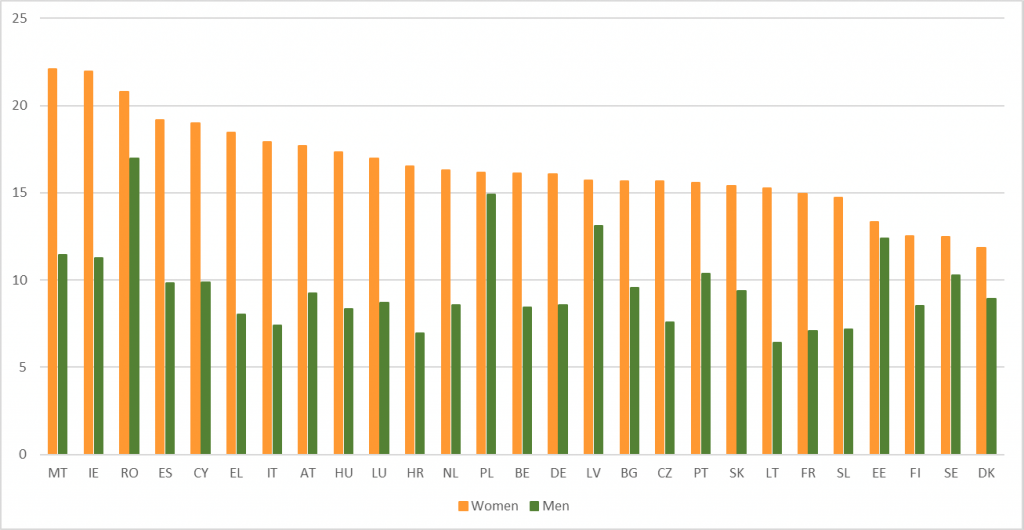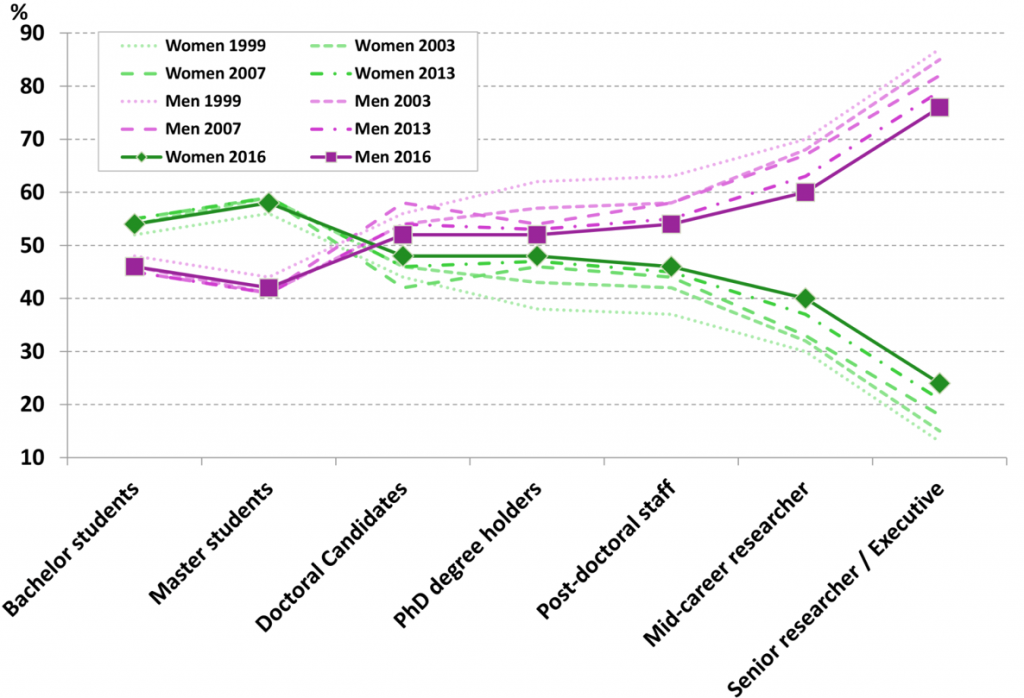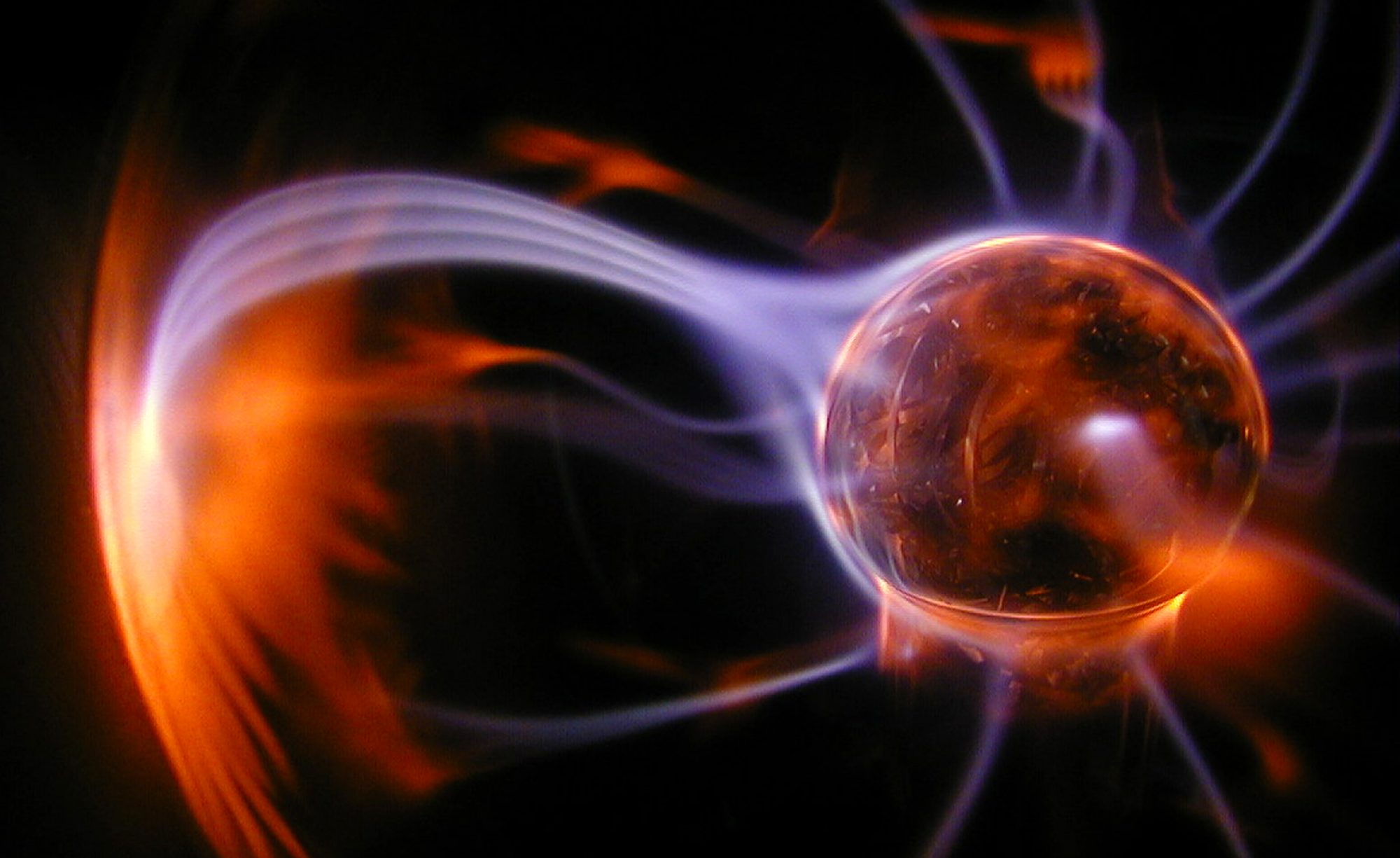Recently, Agnès Dudych from Sorbonne University took the position of project manager of PIONEER. On October 23 there was a first online get-to-know with the ESRs. A meeting with the Supervisors will follow soon. Welcome to the project Agnès!
Methane, why is it important?
Methane is the simplest hydrocarbon composed of a carbon atom bonded to four hydrogen atoms forming a tetrahedral structure. This stable molecule has a global warming potential around 86 times stronger per unit mass than CO2 on a 20-year time scale. Although methane’s emissions are less abundant than carbon dioxide emissions, it is important to address this problem.
Naturally, CH4 emissions occurs daily from methane’s earth cycle coming from wetlands, oceans, permafrost and underwater reserves. Recently, an active leak of methane of sea-bed was discovered in Antarctica rising concerns about this natural contribution of the already unbalanced atmosphere. However, anthropogenic activity has a much larger contribution as we will see next:
Agriculture and waste management sectors are the primary sources of methane emission counting for 227 Tg per year in 2017. This is equivalent to 277 million tons of methane released to the atmosphere (figure 1). Since farming involves the breeding of domestic livestock such as cattle, swine, sheep, and goats who produce CH4 as part of their normal digestive process. Also, when animal manure is stored or managed in lagoons or holding tanks, CH4 is produced. Methane is also generated in landfills as waste decomposes and in the treatment of wastewater. CH4 is also generated from domestic and industrial wastewater treatment and from composting.

Figure 1. The global methane budget for year 2017 based on top-down methods for natural sources and sinks, anthropogenic sources, and mixed natural and anthropogenic sources. (extracted from ref. 1)
Fossil fuel and production also contributes to the overall emissions. Methane is the primary component of natural gas and is emitted to the atmosphere during the production, processing, storage, transmission, and distribution of natural gas and the production, refinement, transportation, and storage of crude oil. Coal mining is also a source of CH4 emissions.
Both sectors, agriculture and energy production, require active and strong mitigation actions. Agriculture requires a gentler and rationed production, we all want a nice grilled steak from time to time, right? Nevertheless, different approaches are taken to address methane conversion.
Generally, methane is converted to synthesis gas via steam reforming. The synthesis gas composed of H2/CO (best known as “syngas”) serves as a feedstock of many chemical processes, e.g., Fischer–Tropsch and methanol synthesis. However, the reaction conversion to syngas is highly endothermic and requires temperatures up to 900°C. By contrast, the partial oxidation of methane to synthesis gas can proceed to a more moderate temperature (around 500°C). Another approach is the utilization of CO2 for the oxidation of methane known as dry reforming. Carbon dioxide conversion releases atomic oxygen that serves for the oxidation of methane whilst methane serves as a source of hydrogens leading to the formation of syngas or C2 compounds. Also, this reaction is thermodynamically unfavorable but in this way two greenhouse gases are transformed to useful chemicals! Here is where catalysis has taken a step to promote the reaction at lower temperatures or increase the selectivity. Metal oxides as MgO or CeO2 in combination with metallic loadings of transition metals like Ni, Pt, Pd, etc. Nonetheless, this approach has significantly improved the outcome but recent studies have used catalytic process in conjunction with plasma or an electric field leading these reactions at a milder condition. Given previous results using low temperature plasmas like Dielectric Barrier Discharges, cold plasmas are a promising route for methane conversion to a sustainable chemical industry.
This text was written by Carolina Garcia
- Jackson, R. B., Saunois, M., Bousquet, P., Canadell, J. G., Poulter, B., Stavert, A. R., … & Tsuruta, A. (2020). Increasing anthropogenic methane emissions arise equally from agricultural and fossil fuel sources. Environmental Research Letters, 15(7), 071002.
- Inventory of U.S. Greenhouse Gas Emissions and Sinks: 1990-2015. (2020, September 11). US EPA. https://www.epa.gov/ghgemissions/inventory-us-greenhouse-gas-emissions-and-sinks-1990-2015
Training at online Plasma School
For various reasons not all ESRs were able to attend last year’s Plasma School at Physikzentrum Bad Honnef, Germany. Therefore, every ESR who missed the opportunity last year, joined the online Plasma School from 5-15 October 2020. So despite Corona now all ESRs posses the same plasma physics knowledge!
Lessons to be learnt on gender gap from the COVID-19 crisis
The current COVID-19 pandemic is highlighting the critical role of scientific research in understanding and managing the global challenges that we are all exposed to. In 2020, we are confronted with a world-wide and major health crisis, unprecedented in contemporary history; but tomorrow it could be global warming, or primary resources scarcity, or energy crisis. Science, technology and innovation (STI) are crucial in solving the problems of today and tomorrow. However, the Coronavirus emergency is also bringing to light the pre-existing inequality that is present in the science, technology, engineering and mathematics (STEM) field.
Based on the reaction of institutions like the European Union and United Nations to the pandemic, including what has been published and organized in the past months, I would like to explore some of the possible consequences on the current disadvantages of marginalized groups as well as the outstanding initiatives that have been taken to counterattack this crisis and the broadening inequalities.

From a general point of view, one of the categories that are particularly vulnerable in the current situation are women. Despite the big steps towards equality that have been taken in the EU Member states, women still take most of the burden of the unpaid domestic workload and tending children and elderly, which is only intensified due to the lockdown and schools closing [1]. The 2016 European Quality of Life survey depicts this reality: in the majority of the Member states women still disproportionately take care of the household and of their children. Figure 1 shows the average number of hours women (orange) and men (green) declare to spend cooking and doing house chores in a week: the first is twice the latter in most countries. The trend is similar when the survey question regards the taking care and educating children [1]. Furthermore, the 2017 Eurobarometer data revealed that the common opinion regarding gender roles in most of the Eastern and Southern European Member states has not changed. A high portion of the people that participated in the survey agreed with the conservative and patriarchal gender norms of men as bread winners and of women having the role “to take care of her home and family” [1].
The 2020 JRC Science for Policy Report “How will the COVID-19 crisis affect existing gender divides in Europe?” claims that the increased in-house responsibilities as effect of lockdown could have long-term negative results on women’s labor market, as they are forced to reduce or give up the time dedicated to work, even in teleworking, to take care of domestic tasks. The JRC Report also mentions some promising tendencies, as the reversing of traditional roles due to the involvement of both partners in the household, and the social recognition of female workers in Education, Health and Social field in the front lines of the outbreak [1].
This disparity within society is reflected in the STEM field. As the situation demonstrates, it is very relevant to analyze the situation of the gender gap in research and academia in EU and explore the possible consequences of the pandemic and lockdown on women in the workforce. Figure 2 is the perfect representation of the “leaky pipeline” that has been used to describe the gender gap in STEM careers [2]. In the EU-28 states in 2016, while more than half of the students entering university are female, the vast majority of the senior positions in academia are covered by male researchers. The situation has indeed improved since 1999, but a lot has to be done to narrow the gender gap.

Figure 2: Proportion (%) of men and women in a typical academic career in EU-28, 1999-2016. Source: She Figures 2018 and 2015
As Figure 2 shows, women are poorly represented in high level positions, of course this is not just a problem of academia and STEM, but it touches every career path. The scarce representation of women has been also revealed during the COVID-19 crisis. Few female figures were involved in the decision-making and managing of the emergency, nor they were in charge, as experts and scientists, of spreading reliable information on the virus and prevention [1].
When women and minorities are represented in the decision-making, inequality issues are integrated into emergency responses for more effective, inclusive and fair policies. This has been proved by the performance of the women leaders of New Zealand, Finland, Iceland, Taiwan, Germany, Denmark and Norway [3]. These Prime Ministers have stepped up promptly and contrasted the Coronavirus spreading with efficient and unconventional methods.
The situation of the health crisis is still very difficult at the moment, but there are some positive initiatives to take into account regarding STI policies and women representation.
First of all, the Coronavirus Global Response, launched by President of the European Commission Ursula von der Leyen, has pledged €15.9 billions for universal vaccination, treatment and testing [4].
UN and UNESCO have also responded actively to the crisis by organizing policy roadmaps, tools and webinars in order to keep the community and the leaders informed [4].
An example is the UNESCO’s Organization for Women Scientists for the Developing World, that has published the survey “Responding to COVID-19” to tell the experience of the researchers and professionals of their network. The inspiring stories tell how different communities have reacted to the pandemic and the impact on women throughout the world. The survey helps to highlight the impact of pandemic on universities and research facilities, particularly and unequally felt in developing countries with fewer resources for remote learning and working, and even more by women having increased responsibilities [6].
The webinar “Sharing Knowledge and Actions on COVID-19” was organized in June 2020 by the L’Oréal-UNESCO For Women in Science Alumnae Network for leading women experts in virology, epidemiology, and related fields to share knowledge and explore potential collaboration. It was an opportunity to renew the support for women’s participation in science and to share experiences in order to better understand the key role played by scientists at international, national, and regional level. One point that was raised is the need to provide a platform for experts to exchange information, resources and knowledge, particularly when it comes to global emergencies [7].
In agreement to this discussion, Open Science and cooperation are the two pillars suggested by Intergovernmental Mobilization of Ministers of Science to counter COVID-19 [5]. Reliable scientific evidence is crucial for policy makers to make informed and inclusive decisions to counter and prevent such crisis. In addition, citizens are more prone to behave responsibly and demystify false information when they are informed with scientific facts by trustworthy experts. Therefore, robust STI systems and funding are found to be very important in times of emergency.
Furthermore, UNESCO advocates for Open Science, international scientific collaborations, sustainable investments in STI, and policy support to STI [5]. The agency declares that Open Science consists of a game-changer to reach the goal of equal access to STI as the human right to science. Open Science would help to increase the participation of women, minorities, and developing communities in STEM research.
Inclusivity in STI research and in policy making is the key for a more responsible and well-informed management of the challenges to be faced at national and international level. Cooperation and sharing of knowledge should be encouraged, not only for transparency and development of the scientific community, but also for the integration of whole society. In conclusion, the COVID-19 crisis should be seen as an opportunity to challenge the social dynamics in order to bridge the gender gap.
This text was written by Beatrice Musig
Sources:
[1] Blaskó, Z., Papadimitriou, E., Manca, A.R., How will the COVID-19 crisis affect existing gender divides in Europe?, EUR 30181 EN, Publications Office of the European Union, Luxembourg, 2020, ISBN 978-92-76-18170-5, doi:10.2760/37511, JRC120525.
[2] https://euraxess.ec.europa.eu/worldwide/japan/gender-equality-human-resources-research-and-marie-sklodowska-curie-actions
[3] Avivah Wittemberg-Cox, What do countries with the best coronavirus reponses have in common? Women leaders, Forbes, 2020 https://www.forbes.com/sites/avivahwittenbergcox/2020/04/13/what-do-countries-with-the-best-coronavirus-reponses-have-in-common-women-leaders/#12855ee03dec
[4] https://global-response.europa.eu/index_it
[5] https://en.unesco.org/covid19/sciencesresponse/international-scientific-cooperation
[6] https://www.owsd.net/resources/owsd-and-covid-19 [7] https://en.unesco.org/news/women-scientists-share-knowledge-and-initiatives-address-covid-19
The Carbon Footprint of the Consortium
Part of my motivation to join the Pioneer project was the environmental topic. The chance to contribute to tackling the challenge of climate change captivated me. On the other hand, here I want to be very honest with you, another part of my motivation came from the prospect to travel around a lot in Europe and even the world. These contradicting feelings bothered me for a while. Eventually, I came to the conclusion that the benefit of research is worth a distinct amount of traveling. However, in my opinion we scientists have to act as role models even more if the research is dealing with an environmental topic like it does within the Pioneer project. We must take responsibility and try to reduce our CO2 emission as much as possible.
Of course, others have already thought about this issue. Didier Barret presented a carbon footprint calculator for large research consortia [1]. It can be found on https://travel-footprint-calculator.irap.omp.eu/. Before using the calculator let’s have a look at the background. The tool focuses on aviation since flights are the biggest contribution to a scientist’s carbon footprint. Basically, it calculates the carbon footprint of round trips, so traveling from a city of origin to a destination and back. This calculation is performed individually or for a group of origins and destinations. The latter is handy to assess the footprint of consortium meetings or conferences and even allows to determine an environmentally preferred meeting location.
For this purpose, the tool on the one hand calculates the distance between a given pair of cities. Deviations from the shortest possible path are considered. On the other hand the tool uses seven different publicly available methods to calculate the carbon dioxide emission as a function of the flight distance. The results of the methods may yield estimates that differ by a factor of five due to uncertainties in the flight related emissions. The environmental impact of aviation is not limited to the combustion of fuel and by this producing radiatively active substances (RAS) such as CO2. Furthermore, planes release material in the atmosphere that produce/destroy RAS such as NOx or substances that trigger the production of aerosols. These non-CO2 effects are considered (or not) in the methods by multiplication factors on the carbon dioxide emission. When choosing multiple models an average is formed. For the calculation economy class is assumed. Higher classes can be included by an additional multiplication factor. Finally, another input is the minimum distance for flying. For shorter travel distance a journey by train is assumed.
The usability of the calculator is now illustrated at the example of the Zaragoza Catalysis School combined with the annual project meeting. Due to the corona pandemic we didn’t meet in person but online. Let’s see how much CO2 we saved, shall we? The calculator on https://travel-footprint-calculator.irap.omp.eu/ needs the origin and destination as pairs of city name, land in US English without diacritics. For the Pioneer consortium it would now look like this:
| Origins | Destination | |||
| City | Country | Number | City | Country |
| Eindhoven | Netherlands | 6 | Zaragoza | Spain |
| Antwerp | Belgium | 2 | ||
| Paris | France | 5 | ||
| Caen | France | 2 | ||
| Trento | Italy | 2 | ||
| Lisbon | Portugal | 4 | ||
| Zaragoza | Spain | 4 | ||
| Bucharest | Romania | 1 | ||
| Krakow | Poland | 2 | ||
| Liverpool | Great Britain | 2 | ||
| York | Great Britain | 1 |
For multiple people starting from the same origin (e.g. ESR + Supervisor) the number of identical entries for that respective origin in the csv file given to the calculator has to match the number of people. The minimum flight distance was set to the default of 500km. The combination of the methods of ADEME, MyClimate and DEFRA that all use multiplication factors to account for non-CO2 effects yield an emission of 17.3t of CO2 Equ. as can be seen in Fig. 1. The ICAO method that is not using any multiplication factors and is therefore not recommended by Barret yields 6.7t CO2 Equ. There is need for a commonly accepted standard on flight emissions!

Barret argues that videoconferencing takes about 7% of the carbon yield of an in-person meeting. This would make 1.211t CO2 Equ. Eventually we saved 16.089t of CO2. Now I feel better even though I couldn’t go to Spain…
Even when traveling will be allowed again in the hopefully not so distant future we should try to keep our footprint as small as possible. Barret advises to limit conference attendance to the absolute minimum, use videoconferencing as often as possible or combine smaller meetings into a big one to reduce the amount of traveling. He sums up this whole issue very nicely:
“Traveling will not be banned but optimized.”
This text
was written by Maik Budde
[1] Barret, D. Estimating, monitoring and minimizing the travel footprint associated with the development of the Athena X-ray Integral Field Unit. Exp Astron (2020). https://doi.org/10.1007/s10686-020-09659-8
Annual Meeting 2020 & Mid-Term Check
Even though it feels like we just started with the project, on June 4 and 5 2020 it was time for our annual meeting and the mid-term check respectively. Although completely online these two days brought us closer together. We highly appreciate the input from externals of the advisory board, our industrial contacts and of course the PO from the EU. They highlighted what is going well and where we can even improve. Therefore, we feel confident with respect to the further course of the project.
Training at Catalysis School
Early Stage Researchers and other interested attendees followed a series of lectures about heterogeneous catalysis (15-29 May 2020). The training was originally planned in Zaragoza, Spain but due to the corona crisis the organizers (Maria Victoria Navarro and Tomás García) reorganized the event to be completely online. So every ESR was able to join and participate in the lectures.
Call for Attention: EU Global Response
To fight the ongoing COVID-19 crisis the European Union launched a global response effort on May 4 aiming to raise €7.5 billion. €1 billion are mobilized by Horizon 2020. The effort is based on two fundamental beliefs. The situation can only be coped with research and innovation and maybe even more important through cooperation. Therefore, the EU brings together and supports researchers and innovators to create effective and safe diagnostics, treatments and vaccines with fair and equal access for everyone. We would like to call attention to this outstanding efforts.
For more information, check the European Commission website: https://global-response.europa.eu/select-language?destination=/node/1
Source : Global-response.europa.eu
Modelling Workshop
On December 2, 2019 the DIFFER institute and the Instituto Superior Técnico organized the modelling workshop All about the Electron Boltzmann Equation at DIFFER, Eindhoven. Interested students and researchers learned in various talks and hands-on exercises about the possibilities and challenges of the modelling of low-temperature plasmas. The organizing committee was formed by Vasco Guerra, Paola Diomede, Pedro Viegas and Luca Vialetto. The ESRs Omar Biondo and Maik Budde joined as participants.
WELTPP-22

The 22nd Workshop on the Exploration of Low-Temperature Plasma Physics, 28-29 November 2019, in Kerkrade, the Netherlands was attended by multiple people of the PIONEER project: Richard Engeln as member of the advisory committee, Vasco Guerra as speaker and Maik Budde as participant.

